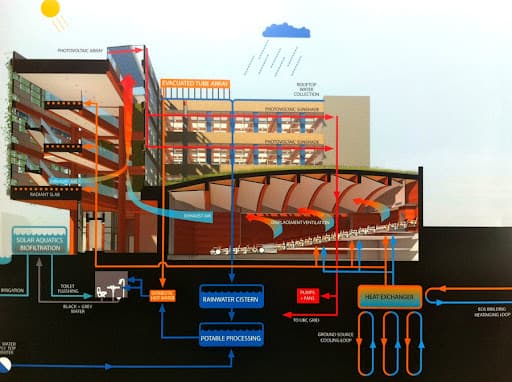Are you currently looking for answers concerning Anatomy of a House: Understanding the Components?

Recognizing how your home's pipes system functions is vital for every house owner. From delivering clean water for alcohol consumption, cooking, and bathing to securely removing wastewater, a well-kept pipes system is essential for your household's wellness and comfort. In this extensive overview, we'll explore the complex network that composes your home's plumbing and offer pointers on maintenance, upgrades, and dealing with usual concerns.
Introduction
Your home's plumbing system is greater than just a network of pipelines; it's an intricate system that guarantees you have accessibility to clean water and efficient wastewater removal. Understanding its parts and how they collaborate can aid you stop pricey repairs and guarantee whatever runs smoothly.
Standard Components of a Plumbing System
Pipes and Tubing
At the heart of your plumbing system are the pipes and tubing that carry water throughout your home. These can be made from numerous products such as copper, PVC, or PEX, each with its benefits in regards to longevity and cost-effectiveness.
Fixtures: Sinks, Toilets, Showers, and so on.
Fixtures like sinks, toilets, showers, and bathtubs are where water is used in your home. Understanding how these fixtures connect to the plumbing system assists in identifying issues and planning upgrades.
Valves and Shut-off Points
Shutoffs regulate the circulation of water in your pipes system. Shut-off shutoffs are important during emergencies or when you need to make repair work, enabling you to separate parts of the system without interrupting water circulation to the whole home.
Water System
Key Water Line
The main water line links your home to the metropolitan supply of water or an exclusive well. It's where water enters your home and is dispersed to numerous components.
Water Meter and Pressure Regulator
The water meter procedures your water use, while a pressure regulator guarantees that water streams at a safe pressure throughout your home's plumbing system, preventing damage to pipelines and components.
Cold Water vs. Warm water Lines
Recognizing the difference in between cold water lines, which supply water directly from the major, and warm water lines, which lug warmed water from the water heater, assists in fixing and planning for upgrades.
Drainage System
Drain Pipes Water Lines and Traps
Drain pipes lug wastewater far from sinks, showers, and commodes to the drain or sewage-disposal tank. Traps avoid sewer gases from entering your home and additionally catch debris that might cause blockages.
Ventilation Pipes
Air flow pipes permit air right into the water drainage system, stopping suction that might slow drainage and create traps to vacant. Appropriate ventilation is crucial for preserving the stability of your plumbing system.
Value of Appropriate Drainage
Ensuring correct drain prevents back-ups and water damage. Consistently cleaning up drains pipes and preserving catches can stop costly repair services and extend the life of your pipes system.
Water Heating System
Kinds Of Hot Water Heater
Water heaters can be tankless or typical tank-style. Tankless heating units warmth water on demand, while storage tanks save heated water for prompt use.
Updating Your Pipes System
Reasons for Updating
Updating to water-efficient fixtures or changing old pipelines can enhance water top quality, decrease water costs, and increase the worth of your home.
Modern Pipes Technologies and Their Advantages
Check out modern technologies like smart leak detectors, water-saving commodes, and energy-efficient water heaters that can save money and decrease ecological impact.
Cost Factors To Consider and ROI
Compute the upfront costs versus lasting savings when thinking about pipes upgrades. Lots of upgrades pay for themselves with lowered utility expenses and less repairs.
Exactly How Water Heaters Connect to the Pipes System
Recognizing just how hot water heater connect to both the cold water supply and hot water distribution lines helps in diagnosing issues like inadequate hot water or leaks.
Maintenance Tips for Water Heaters
On a regular basis purging your hot water heater to get rid of debris, examining the temperature level setups, and evaluating for leakages can expand its life-span and boost power effectiveness.
Typical Plumbing Issues
Leaks and Their Causes
Leakages can take place as a result of maturing pipelines, loose installations, or high water stress. Resolving leakages without delay protects against water damages and mold and mildew development.
Obstructions and Clogs
Obstructions in drains pipes and bathrooms are commonly brought on by flushing non-flushable items or a build-up of oil and hair. Utilizing drainpipe screens and being mindful of what decreases your drains can prevent clogs.
Indicators of Pipes Issues to Look For
Low water pressure, slow-moving drains pipes, foul odors, or uncommonly high water bills are signs of potential pipes issues that ought to be dealt with quickly.
Pipes Upkeep Tips
Routine Assessments and Checks
Arrange annual pipes evaluations to catch issues early. Look for indicators of leakages, corrosion, or mineral build-up in taps and showerheads.
Do It Yourself Maintenance Tasks
Simple jobs like cleansing faucet aerators, looking for bathroom leaks using color tablets, or shielding subjected pipes in cool environments can prevent significant plumbing concerns.
When to Call an Expert Plumbing
Know when a pipes issue calls for expert proficiency. Trying complicated fixings without appropriate expertise can result in even more damage and greater repair expenses.
Tips for Reducing Water Use
Simple routines like dealing with leaks without delay, taking shorter showers, and running complete loads of laundry and recipes can conserve water and lower your energy bills.
Eco-Friendly Pipes Options
Consider lasting pipes products like bamboo for flooring, which is durable and environmentally friendly, or recycled glass for kitchen counters.
Emergency Readiness
Actions to Take During a Pipes Emergency
Know where your shut-off valves are located and exactly how to turn off the water in case of a burst pipeline or major leakage.
Relevance of Having Emergency Get In Touches With Useful
Maintain call information for local plumbing professionals or emergency solutions easily available for quick action throughout a plumbing dilemma.
Ecological Influence and Preservation
Water-Saving Components and Appliances
Installing low-flow faucets, showerheads, and bathrooms can dramatically reduce water use without compromising efficiency.
Do It Yourself Emergency Situation Fixes (When Relevant).
Temporary fixes like utilizing air duct tape to spot a dripping pipeline or putting a pail under a trickling tap can decrease damages up until an expert plumbing professional gets here.
Verdict.
Recognizing the makeup of your home's pipes system equips you to preserve it efficiently, saving time and money on repairs. By following normal upkeep regimens and remaining notified about modern pipes modern technologies, you can guarantee your pipes system runs effectively for many years to find.
HOW YOUR PLUMBING SYSTEM WORKS
Which Pipes Do What?
Blue lines = fresh water supply entering the building Red lines = hot water supply entering the building Grey lines = pipes carrying waste away from the building and venting pipes carrying gases away from the building (through the roof) YOUR MAIN PLUMBING SYSTEMS
There are two main plumbing systems that support your home s basic plumbing needs one that brings clean water into your home, and one that sends dirty water away from your home. Connected to the toilet, bath, shower, and other faucets in your home, these two systems keep your water flowing in the right directions.
ACCESSING FRESH WATER
Fresh and clean water is brought into your home through the main water supply line . Filtered through one pipe, this water is pressured to flow into the various fixtures in your home at any given time.
This water can be sourced from a well located on your property, a pond or river (mostly cottages), or, as in most cases, from the city s municipal water treatment centre. However, it is important to note that water that is untreated, such as the water siphoned from ponds or rivers, may not be safe to drink. Personal water supplies always need to be treated for hardness and contaminants before consumed.
MUNICIPAL WATER SUPPLIES
Improve taste and odour Remove sediment Eliminate hardness Reduce chlorine COLD WATER SUPPLY VS. HOT WATER SUPPLY
Cold water flows into your home or building through the service line, which then distributes hot or cold water to your fixtures. This line is most commonly run through a central column that runs floor to floor. Hot water runs in short and straight pipes as the longer the pipeline, the more heat that will be lost in the transfer. Having shorter pipes also allows residents to access hot water more quickly.
WASTE WATER SYSTEM
Your wastewater system is divided into two parts pipes that send wastewater away from your home and venting pipes that send sewer gas away from your home. Sewage water travels through pipes that flush the water and waste towards local sewers that are operated and managed by your city or town. Most sewer systems rely on gravity to move the wastewater to where it needs to go.
The further away from your toilet or sink, the larger wastewater pipes become. This allows for waste to be disposed of from various parts of your home or business at once without pipe blockages. The angle and flow of these pipes are also essential for keeping your waste pipes clear of build up.
https://harrisplumbing.ca/how-your-home-plumbing-system-works/

We hope you liked our article on Exploring Your Homes Plumbing Anatomy. Thanks for taking time to browse our blog post. Loved our posting? Please share it. Help other people locate it. Thanks for your time. Don't forget to check up our site back soon.
View Website
 Richard "Little Hercules" Sandrak Then & Now!
Richard "Little Hercules" Sandrak Then & Now! Michael Fishman Then & Now!
Michael Fishman Then & Now! Michael C. Maronna Then & Now!
Michael C. Maronna Then & Now! Suri Cruise Then & Now!
Suri Cruise Then & Now! Kerri Strug Then & Now!
Kerri Strug Then & Now!